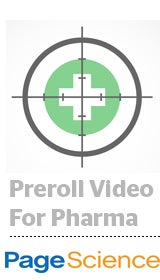 It’s difficult for health and pharma advertisers to navigate the FDA’s regulatory landscape. A few years ago, for instance, they were barred from using cookie-based targeting.
It’s difficult for health and pharma advertisers to navigate the FDA’s regulatory landscape. A few years ago, for instance, they were barred from using cookie-based targeting.
That’s why PageScience, an ad network for the pharma industry, began working with AppNexus in 2011 to build a contextual targeting solution called PageMatch, which helps advertisers reach consumers based on the digital content they consume. It uses criteria like relevancy, viewability and historical ad performance to determine whether a site is a good match for an advertiser.
But even as the FDA cracks down, the health care vertical still needs to expand its advertising channels. On Tuesday, PageScience extended its targeting tech with a video platform to bring contextual scoring to pre-roll spots.
“The pharma firms are starting to take an interest in pre-roll video because they’re heavy users of television,” said PageScience CEO Bill Jennings. “The reason they’re looking for specific video content is to utilize that TV creative, but find the contextual [digital] environment where a patient can digest all of the messaging.”
Brands can pick video placements based either on specific medical conditions or on general topics like cooking, wellness, fitness and other health-focused content. According to Jennings, PageScience has pre-scored 75 million pages for more than 100 health conditions and scores 100 million pages per month.
For its launch, PageScience teamed up with Scripps, a publisher with digital content on 33 TV station sites. Advertisers on PageScience’s platform will mostly include prescription drug brands. Swiss health care company Roche trialed the offering by advertising its ACCU-CHEK diabetes monitors.
“Health has been a huge category for us and is very important for our audience,” said Scripps VP Tom Sly. “It’s consistently one of the top five or six content categories our audience is spending time with.”
Within Scripps, PageScience has identified a handful of contextual health categories, like diabetes, allergies and asthma, to offer advertisers.
Traditionally, pharma TV ads can be lengthy in order to accommodate fair balance information – the fine print about medications that marketers are obliged to disclose. The longer TV ads can run between 60 and 75 seconds, but the cutoff for PageScience’s pre-roll videos is 60 seconds. To comply with fair balance information, Sly said Scripps is running companion display ads, and only accepts spots longer than 60 seconds if the videos are skippable.
Despite regulatory hurdles for health marketing via display advertising, pre-roll video ads actually make pharma advertising easier, Jennings claimed, because targeted can be tailored to a broader audience. Pharma advertisers are looking to run more general ads that can be bucketed to broad health and wellness interests, he said. But if that’s true, advertisers may wonder if their messages truly are reaching the right audience.
“The standards that we’re held to for display with page-level scoring is a broader target when you get to video,” he explained. “Advertisers are looking for demo targeting or targeting against notions of lifestyle. It doesn’t have to be as contextual as banner targeting.”
AdExchanger Daily
Get our editors’ roundup delivered to your inbox every weekday.
Daily Roundup
For metrics, PageScience measures completion rates, but Jennings couldn’t share specific figures around early results. For pharma advertisers interested in digital video, Jennings explained that the format work best for predominant conditions. It’s fairly easy to target prevalent health conditions like diabetes or allergies, he said, but ensuring reach against a niche health condition is more difficult.
Sly declined to quantify Scripps’ increase in revenue due to the partnership but said he is encouraged by what the firm has seen so far.
“High-quality preroll video is in short supply,” he said. “There’s definitely great demand for it.”
“What’s encouraging about this partnership is that we’re giving pharma advertisers a way to reach a new target audience,” Sly added. “For Scripps, it’s an opportunity to grow share of revenue. For the pharma advertisers, it’s a opportunity to reach high-quality audiences with a different platform.”













